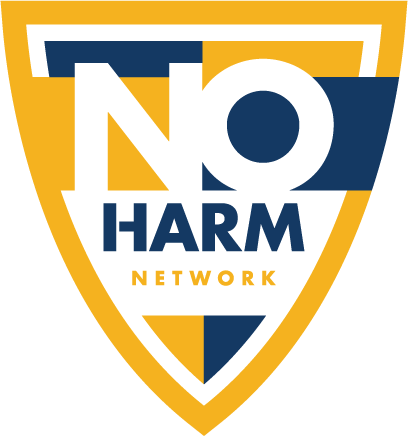From Fear to Freedom: Empowering Survivors of Domestic Violence
/Written by Claudia Davila, Chief Programs Officer, New Friends New Life
*Image from National Institutes of Health
“If we are to fight discrimination and injustice against women we must start from the home for if a woman cannot be safe in her own house, then she cannot be expected to feel safe anywhere.”
- Aysha Taryam
Moving to the United States from Peru at the age of 14 was one of the most impactful experiences of my life. What I experienced at that vulnerable age set the trajectory of my life and found my calling. It wasn’t until witnessing gender discrimination, physical and emotional abuse, and power and control dynamics with my fellow students and their families that I knew that the messages given to me as a child were going to serve a purpose; to help those in need and help empower those in vulnerable populations.
My dad, a civil engineer, had always taught me to question authority if something wasn’t right, to help those in need and to always treat the janitor the same way as the president of a company. My mother who is the strongest woman I know, had always taught me that no one has the right to make you feel lesser than, to be strong and independent and to stand up for what you believe in. I never would have thought that these messages would help me as a young naïve girl in a new country. The first time I witnessed abusive behaviors was when a male student called a female student demeaning names in the middle of the school cafeteria. Needless to say, this female student shrugged and became understandably very emotional. With my broken English at the time, I knew that I needed to say something and stand up for her. The second time, at another student’s home, I witnessed her dad slapping her mother’s face while screaming at her insulting her with very obscene language. I intervened. Yes, at 14!
Intimate partner violence (IPV) has existed for centuries in the United States and all over the world. IPV includes a spectrum of physical, sexual, or psychological harm as well as stalking conduct by a present or former partner across a sequence of severity. Many types of abusive behaviors have been identified including social and/or financial abuse. IPV does not discriminate. It affects men and women. Children and adults. It affects heterosexual and same sex couples alike. Couples of all . This type of abuse is seen across all education and socioeconomic levels and happens in all ethnic, racial, and religious groups.
Most of these relationships start off normally. As time goes by, the behavior changes. A partner may become more controlling, or become possessive of the other person. These changes usually don’t happen overnight. They often occur gradually. In the United States, IPV is a critical public health concern that mostly affects women and girls. Adames & Campbell (2015) reported that over a third of women in the United States have experienced intimate partner violence such as rape, physical violence, or stalking by a partner.. It was not classified as a topic for public concern until the 20th century. Furthermore, the issue of “wife beating” was not introduced to the political arena or defined as a problem until the 1970s.
To give a historical context, women have been devalued and owned by a patriarchal society and systems which support male authority and control that encourages subordination and submissiveness (Adames & Campbell, 2015). Some patriarchal values and beliefs systems do not cause men to commit intimate partner violence, however, they do influence a role in its continuation of these behaviors by shaping the culture in which the normal gender roles expectations of male control and dominance and female subordination continue to be fostered. These patriarchal values and belief systems of male, heterosexual dominance, plus the under value of women and girls lie at the root of these gender-based violence and control dynamics.
It is estimated that nearly 20 people per minute can be physically and emotionally abused by an intimate partner in the United States. Moreover, it is estimated that one in four women will experience a very serious intimate partner physical aggressive act of violence (National Coalition Against Domestic Violence, NCADV, 2023). The rise and development of the feminist movement was a major factor that contributed to the heightened awareness of the intimate partner violence issue. (Smith, 2006). Efforts by the battered women’s movement in the past decades have aided in the shift of private and public perception that have led to address this issue.
When we think about trafficking, there is an overlap in the pattern of behaviors that both abusers and traffickers use to exert power and control over a victim. According to the National Network to end domestic violence (NNEDV), intimate partner violence perpetrators often use the same power and control tactics as traffickers to groom and control their victims, including psychological manipulation, physical abuse, financial control, substance abuse coercion, and sexual violence. Many people who experience intimate partner violence and trafficking are subject to an ongoing cycle of trauma. When these partners behave abusively, they undermine the trust in a relationship, which makes their victims become more vulnerable to emotional or financial exploitation. This in turn exposes them to further victimization by intimates and strangers.
Domestic violence is a destructive crime that creates life-altering damage for everyone involved. Knowing how to recognize the signs of intimate partner violence in a relationship and the power and control dynamics that are exerted, is an important step in beginning to break the cycle.
If you are experiencing domestic violence, intimate partner violence, you can call the 24-hour hotline: National Domestic Violence Hotline - 1-800-799-SAFE (7233)
Adames, S. B., & Campbell, R. (2015). Latinas conceptualizations of intimate partner violence. Violence Against Women, 11, 1341–1364. https://doi.org/10.1177/1077801205280191
Centers for Disease Control and Prevention. (2023). Understanding intimate partner violence: Fact sheet. http://www.cdc.gov/violenceprevention/pdf/IPV_factsheet-a.pdf.
NCADV (2023). National Coalition Against Domestic Violence









